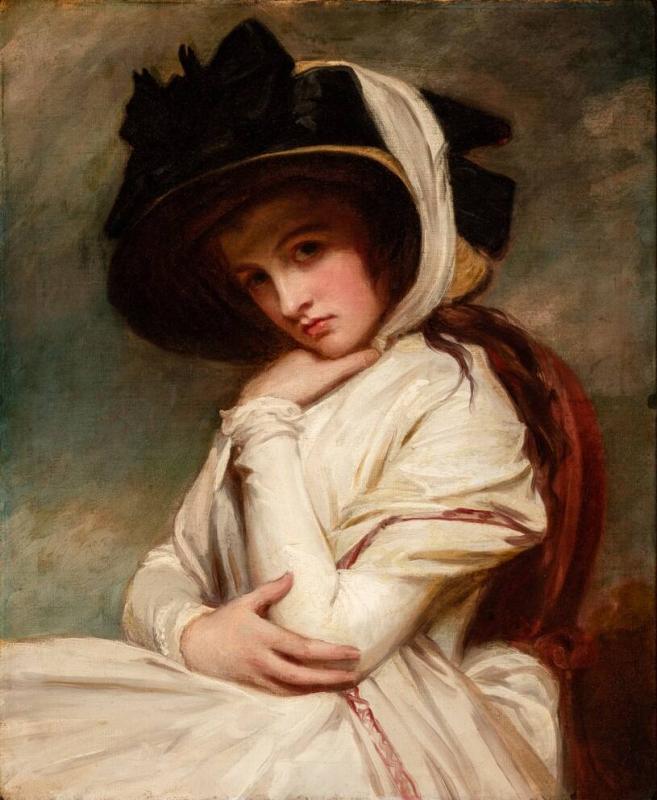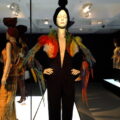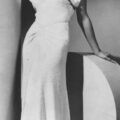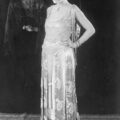1800s haute couture – Louis Hippolye Leroy and Empress Joséphine.
October 1, 2021Officially, haute couture was born in 1858 when Charles Frederick Worth said it was. He proclaimed himself the Father of Couture – according to him, there was no Mother of Couture. Obviously, there was plenty of high fashion around before 1858, including dressmakers and original designers. Rose Bertin made some incredible, lavish, original creations for the French Queen Marie Antoinette, which the rest of the court sought to copy or at least take inspiration from. She was known as The Minister For Fashion. However, Bertin died in 1813. Her work and influence had dwindled by then, so I’m not sure we can legitimately include her in a discussion of 1800s haute couture.
Moving on From Muslin
However, I’d love to talk about her successor, Louis Hippolyte Leroy. He was the designer to Empress Joséphine, and the Imperial court of Napoleon I. Part of the cause of the French Revolution was the Royal Court’s ostentatious lifestyle. This included Marie Antoinette’s outfits. In rejection of all that, simple neoclassical silhouettes were in style, made in muslin. It was also a mark of respect towards the revolutionary women who had worn only muslin shifts in prison.

Emma Hamilton by George Romney. Image via Wikipedia.

Short haircut and high bust. Image via MessyNessy.
People were also excited about the recent discovery of Herculaneum and Pompeii and started to dress in an “Ancient Greek” style, or at least, their interpretation of it. Emma Hamilton, the long term lover of Lord Nelson, had popularised this with her performances of “Attitudes”. She dressed in flowing draperies and assumed the poses depicted on various famous Greek vases and friezes. These performances, and Emma herself, were greatly admired. White muslin dresses with a high, belted waist just under the breasts were all the rage. The thin material was transparent, and the most fashionable women even exposed their breasts. They wore curls like Greek statues or short, prison-style hair.
1800s Haute Couture – beginning with Emperor Joséphine’s coronation
But in the end, Joséphine Bonaparte (born Marie Josèphe Rose Tascher de La Pagerie), the first wife of Napoleon Bonaparte, was no less fancy than Marie Antoinette had been. The problem was that French industry had relied on all that conspicuous consumption. People wove the silk velvet and made the ribbons the French court so adored. They handmade the artificial flowers, embroidery, hats, wigs, tiny ships to sail across the head and whatever else was chic and amusing at the time. And seamstresses in their hundreds stitched it all together. So abandoning luxury was causing mass unemployment.
Napoléon was already the leader of France as First Consul from 1799, and he quickly killed the Neoclassical style of dress with a sumptuary law. He banned the wearing of muslin at court, as it came to France from India via England. In 1802 he ordered a formal dress code at all court functions. In 1804 Napoléon was crowned emperor and crowned, in turn, his Empress.
At her coronation, Empress Joséphine had to provide a good example with her outfit and she did well. 1800s haute couture effectively started here.
Sumptuous Coronation Costume
The House of Leroy provided her coronation costume. It seems that there were two different dresses, as contemporary engravings differ so widely. She got changed during the ceremony. This does seem likely. In everyday life, she never wore the same outfit twice and changed several times a day.
In the official portrait, the ensemble consisted of a silver and gold-embroidered ivory silk dress. It’s in a high-busted empire line style, which was the fashion at the time. However, to make it more regal and ceremonial, there are plenty of nods to historical royal clothing. It has puffed shoulders and long sleeves that come down over the hands, in the Renaissance style. There is an exquisitely delicate standing lace collar in gold, attached at the shoulders and worn behind the head. This is known as a chérusque or Medicis collar, after Marie de’ Medici, who was crowned queen regent for her son, Louis VIII, in 1610. The dress has bee embroidery, which were both Napoléon’s emblem and that of past French monarchs. There is also gold ribbons and gold lace.
She also has a deep pile red velvet cloak, also gold embroidered. It’s lined entirely in ermine fur. It was supposed to be asymmetric, slung over one shoulder. But it was so heavy it had to be supported on both, and she stumbled from its weight. Or maybe, gossip suggests, that was because a jealous sister deliberately stood on its hem. Joséphine has pearl, diamond, and emerald bracelets, necklace, and crown. Even her shoes are of matching embroidered and jewelled silk.
1800s Haute Couture – kickstarted by the House of Leroy
Jean-Baptiste Isabey had designed the whole costume. He was paid for it as a freelancer. Louis Hippolyte Leroy showed the designs to the Empress, had them approved and had it made. Leroy never designed anything, much less stitched them up. He bought designs from painters, artists like Louis-Philibert Debucourt, Jean-Baptiste Isabey and Auguste Garneray. The coronation costume was a success and Joséphine’s outfit would influence European court fashions for years to come. This was the ultimate in 1800s haute couture.
The House of Leroy became the Empress’s favourite clothes supplier. Of course, this meant that he was a favourite with the whole court. He even became the designer for several other royal courts in Europe during the early 19th century. Leroy became a millionaire. The designer was the son of a machinist of the Royal Opera. He trained to be a hairdresser and initially worked at the Royal court of Versailles. Madame Herbault provided hats and accessories for the French court.
Fashion moved on
Quite soon, dresses lost the Grecian influence and high waisted, straight skirted silhouette altogether. Waistlines dropped from right under the breasts towards the natural waist. The skirts became more conical, as decoration increased and was far flouncier. The NeoClassical period became a bit of an aberration, as dresses and hairstyles were far more like those worn in Marie Antoinette’s time. In fact, Victorians were quite embarrassed at the flimsy, sometimes transparent outfits their mothers had worn.










